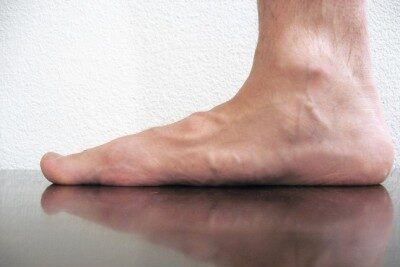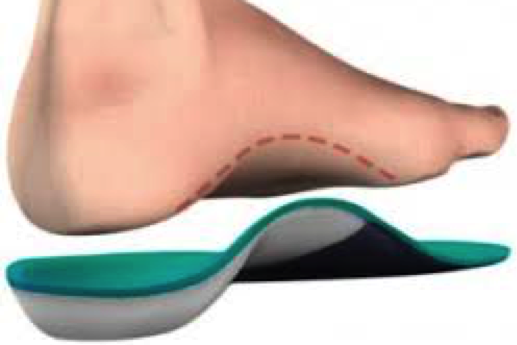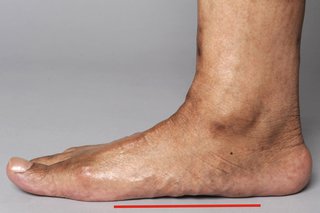What is Flatfoot?
When the entire sole of the foot is in contact or near contact with the ground while standing, it is considered a flat foot. The result is that there is no arch to the foot.
You can check when you get out of the bath what your wet footprint looks like on the floor.
Flatfoot is a common but complex deformity, and there are types and stages that vary in degree of symptoms and disability.
What are the different types of flatfoot?
There are two general types of flatfoot; flexible and rigid.
Rigid is the type found in older people which means that you have a flat arch not only in standing with feet flat but also when you are sitting.
This type of flatfoot develops because of the weakening of the Tibialis posterior muscle tendon, which is a muscle that is very important in supporting the medial arch of the foot and preventing the ankle roll in.
There are also other orthopaedic reasons why the ankle tends to roll in which can be caused by weak Glutei muscles in your bottom, Knee problems and weak Quadriceps.
If you are carrying too much weight this tends to make the problem worse.
It is important to correct the reasons for the problem to stop it progressing where it can lead to foot pain and then ankle pain.


Treatment for Flat Foot
1. Seek advice from a Podiatrist and Physiotherapist to ascertain the cause
2. Try and lose some weight
3. Wear good shoes with good arch support
4. Perform some exercises to strengthen the arch
5. Perform exercises to strengthen your Gluteii muscles and Quadriceps.
6. Be aware of your posture in standing and try to tense your buttocks and roll your legs out slightly
7. Buy some arch supports
Initially you can try some off the peg arch supports. There are many companies that make them and there is a good company called Neothotics who sell them through branches of Boots and Argos.
Or you can seek help from a podiatrist who will analyse your gait in a variety of methods and make bespoke orthotic inner soles.

